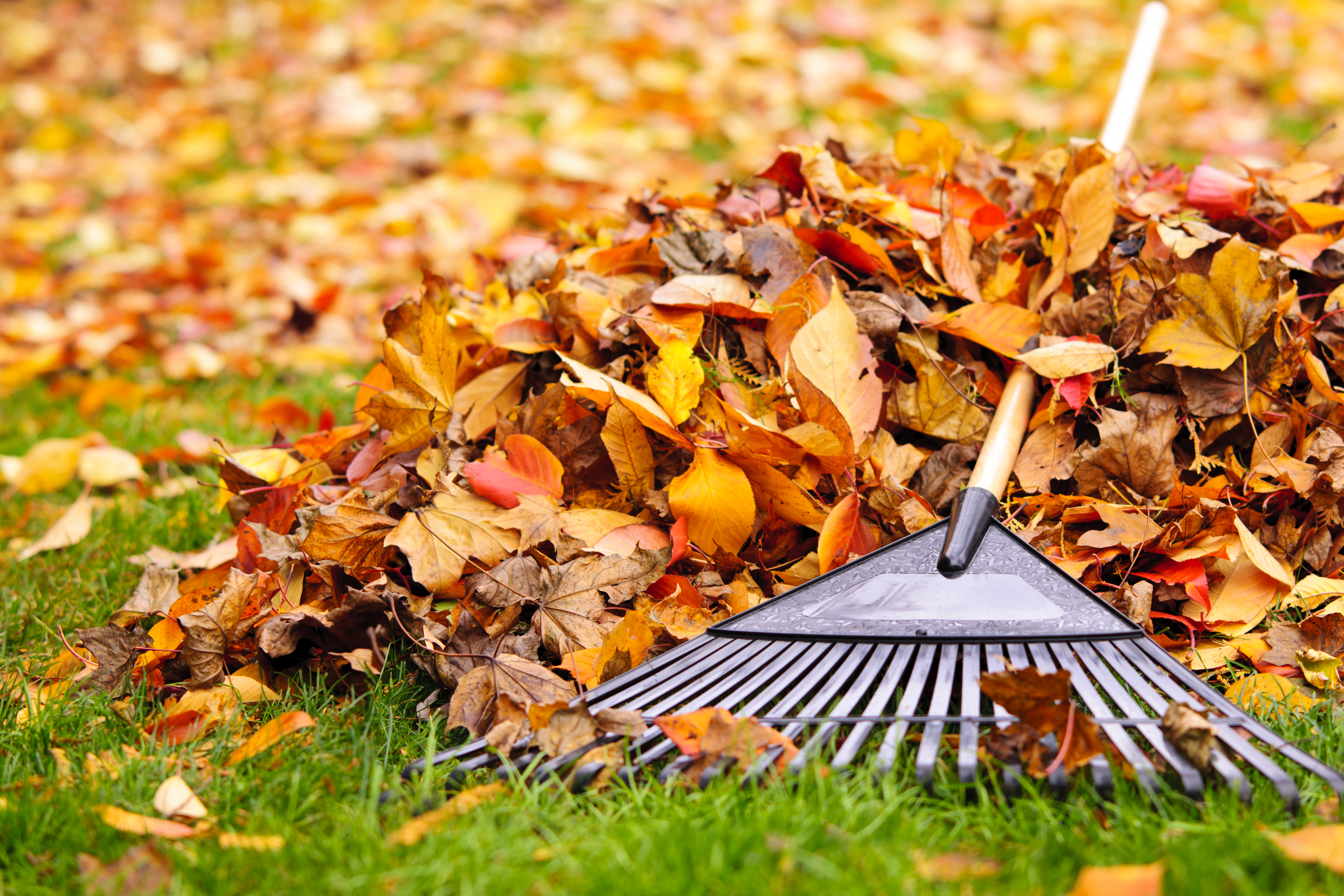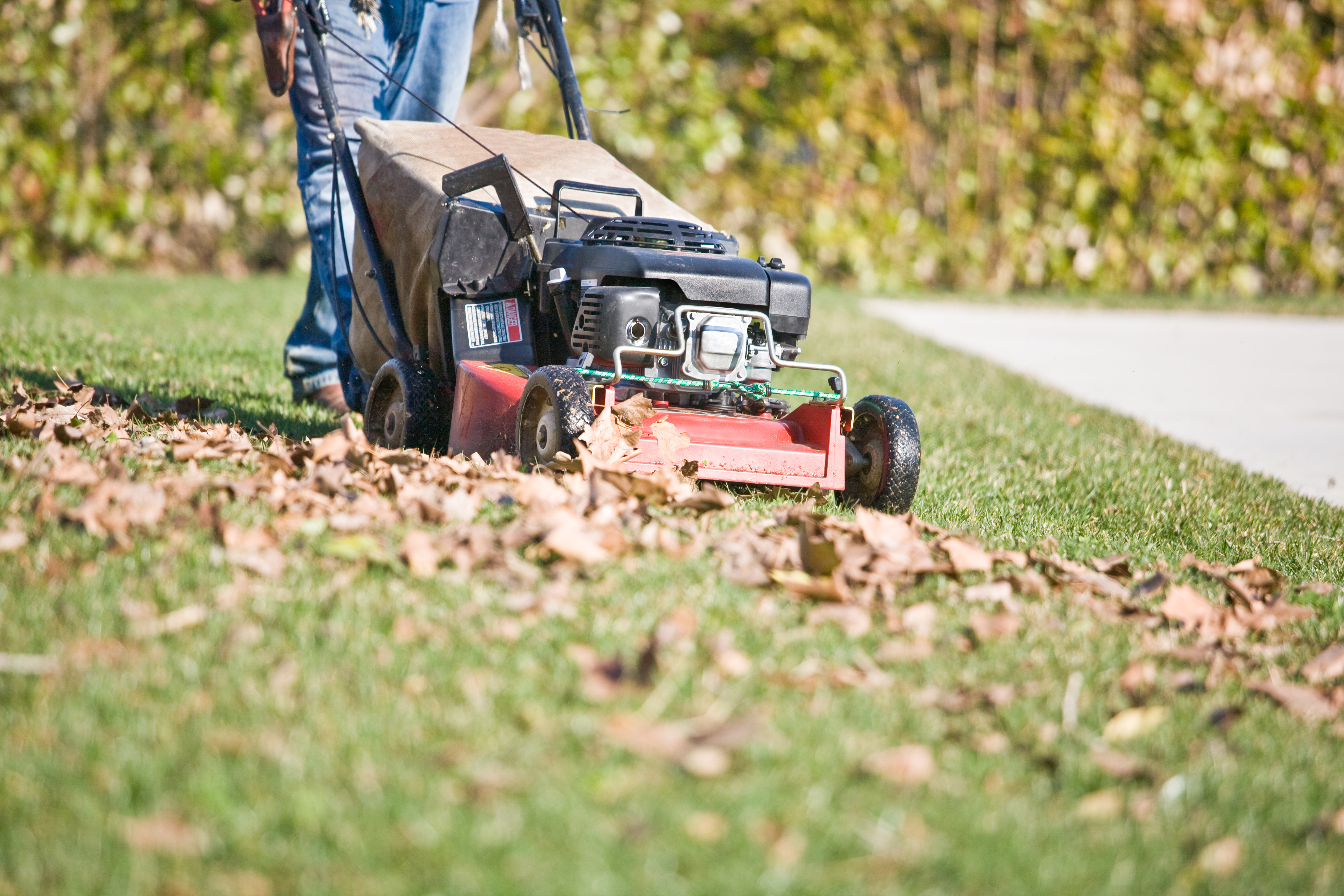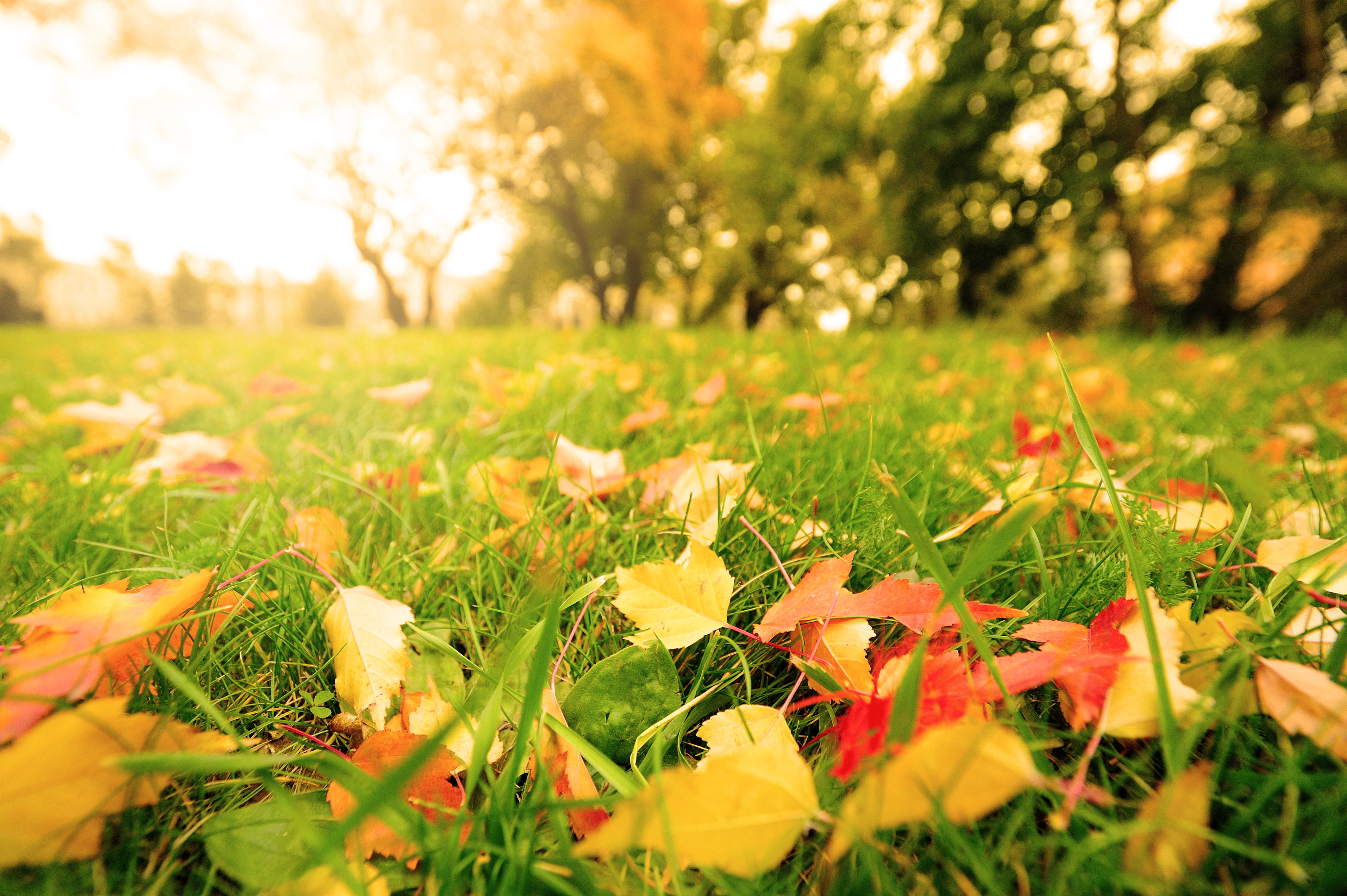
It's that time of year when your lawn is probably littered with autumn leaves. While the spectrum of colors can look quite the spectacle, proud lawn owners will be tempted to rake them up or grab the leaf blower as soon as the first dead leaf flutters down, but professional gardeners are actually urging you to avoid exactly that.
If you really care about the health of your lawn, you'll want to mow over the dead leaves in your modern garden instead. Now, I know what you're thinking - surely that's going to strim those dead leaves into a mess of damp and rotting organic matter? Well, yes it is, but that's entirely the point.
This process, known as mulching, is all about feeding your lawn with all the essential nutrients it needs for bright, luscious grass come spring. But, while mulching the dead leaves on your lawn can have some serious benefits, there are also some words of warning from professional gardeners about how to do this task properly if you want to reap the best results. Here's what you need to know.
Why should you mow over leaves on your lawn?

The idea behind mowing over leaves on your lawn is to make a mulch. Mulching is essentially the process of using organic matter to suppress weeds, improve your soil, and protect your plants' roots from frost. You can buy bagged mulch for the likes of flowerbeds and garden borders (which often comes in the form of bark chips), but when it comes to your lawn, dead leaves are the easiest way to mulch your grass. It's possibly the easiest and cheapest method of mulching there is.
'You can just mulch over them by mowing on top of the leaves,' explains Tom Su, garden and landscaping expert and the owner of Lawn Edging. 'If you have one, use a mulching mower that's equipped with a bag. This breaks the leaves into smaller pieces that decay rapidly which, compared to raking and bagging, saves on time and has better benefits for the lawn’s health.'
Jeremy Yamaguchi, CEO of Lawn Love, agrees it's a much more efficient method than raking all the leaves in your backyard. 'This machine will shred leaves into tiny flakes that settle into the grass and decompose into natural fertilizer,' he says. 'While you may have to go over some areas multiple times, it's still a whole lot easier than raking them all up! Plus, it will benefit your yard in the long run.'
You'll be pleased to know that mulching leaves with a mower is easy. 'Simply use your lawn mower to cut as many leaves as you can as soon as they fall,' says Mike Lansing, certified garden designer and managing editor of Planters Digest. 'Make sure that there isn't an excessive amount of mulched leaf particles remaining. It should be evenly distributed throughout the turf and not build up to the point where it suffocates the grass blades.'
He adds that you can also use a leaf vacuum for mulching leaves if you don't have the budget for a mulching mower. 'All you have to do is get a mulching
attachment for your leaf vacuum,' Jeremey notes. 'This is essentially a bag that will attach to the vacuum, collecting the shredded leaves for you. It’s super easy and
convenient, especially if you already have a leaf vacuum.' We love this leaf vacuum option from Amazon which comes with a bag attachment.
Why is mulching leaves good for your lawn?
Mowing over your dead leaves to make a lawn mulch has a host of benefits for your grass. It can help your soil retain moisture, suppress weeds, and act as a fertilizing compost to give your grass all the nutrients it needs ahead of winter.
'Mulching leaves involves returning nutritive value back to the soil,' Tom explains. 'They decompose and release essential nutrients like nitrogen, phosphorus, and potash vital to the growth of the grass. It is similar to providing your lawn with all-natural, gentle nutrition.'
'We recommend applying leaf mulch on your lawn instead of sweeping them away from the lawn,' adds Mike. 'Because leaf compost contains necessary nutrients, it improves the nutrient capacity of the soil so your grass can grow there more successfully.'
He notes that besides being a key part of an organic lawn care routine for fertilizing your grass, this practice comes with a host of added benefits, too. 'Mulching not only encourages stronger, healthier grass with fewer weeds, mosses, and bare spots, but it lessens if not completely eliminates the need for synthetic fertilizers.' This means a backyard that's not only safe for your family but your local wildlife, too.
When should you avoid mowing over leaves?

While mulching with your mower is a genius use for dead leaves, there are some instances where it might want to be avoided. 'First off, you need to be careful about leaf thickness,' notes Tom. 'The layer should not be too dense since if this happens, it can suffocate the grass, thereby causing problems such as fungal diseases due to lack of fresh air and sunlight. Depending on how many leaves you have, you might want to mow them a little bit at a time.'
He goes on to explain that not all leaves are not made alike, either. 'For example, oak leaves are more likely acidic and can eventually change the pH of soil,' he says. 'Moreover, mulches made out of diseased tree leaves should not be applied on the lawn as a way of preventing further contamination.'
You'll also want to make sure you mow your leaves with the right weather conditions to save your garden from becoming a total mess. 'Mulch is easily blown away by the wind if it is not sufficiently shredded or if it is not firmly laid on top of the soil,' Mike points out. It's best to mow over leaves and then allow them to soak in from rainfall or a light watering so that they find their way into the ground. 'Mulch can also give grass pests a place to hide, which increases the risk of infestations,' he adds. Be sure to monitor your lawn through winter to maintain a healthy, pest-free lawn through spring and summer.
When it comes to your fall lawn, gardeners urge you to wave goodbye to raking and put down the leaf blower. If your final mow before winter is coming up, let those leaves be and allow their nutrients to benefit your grass for a luscious lawn come spring.







